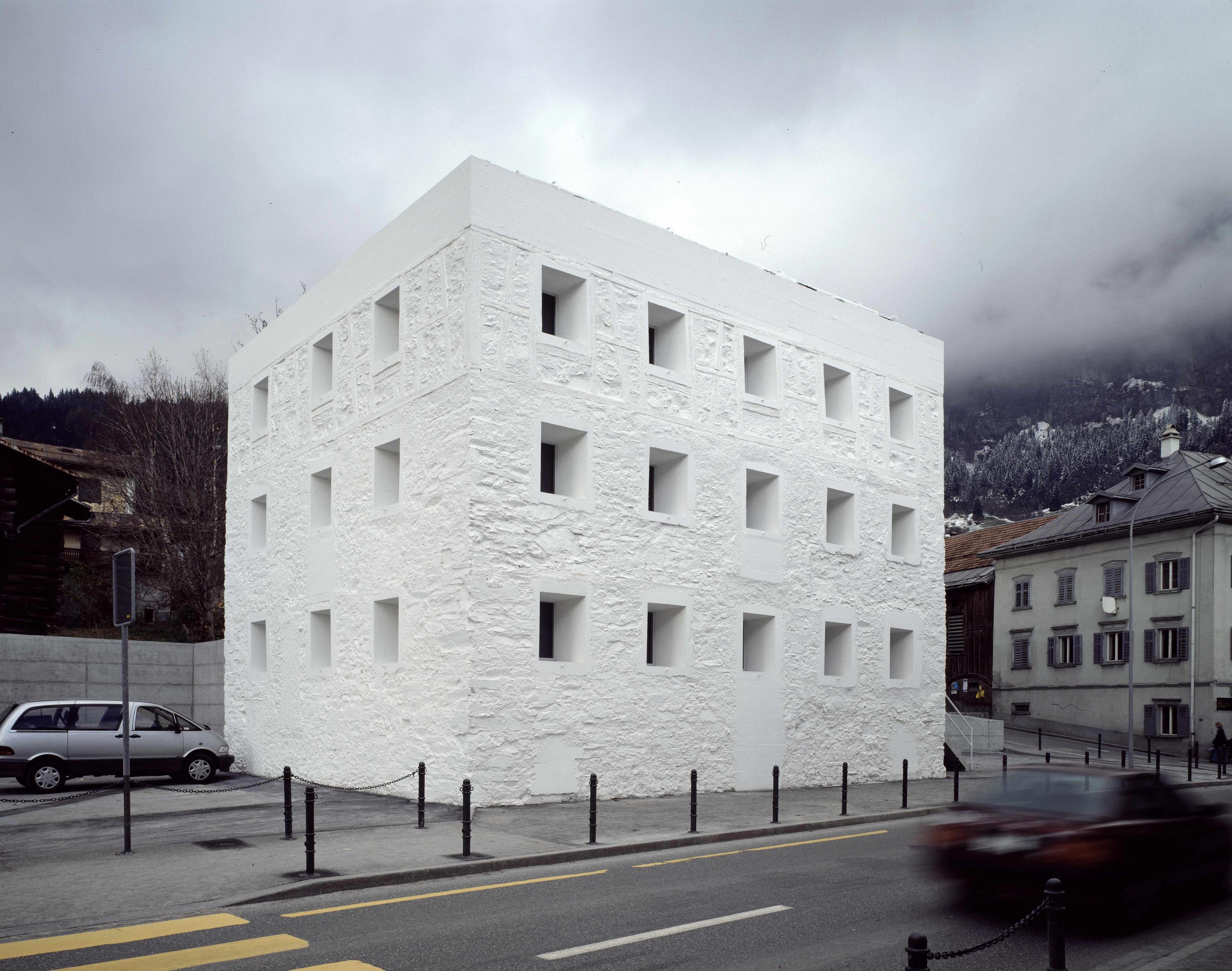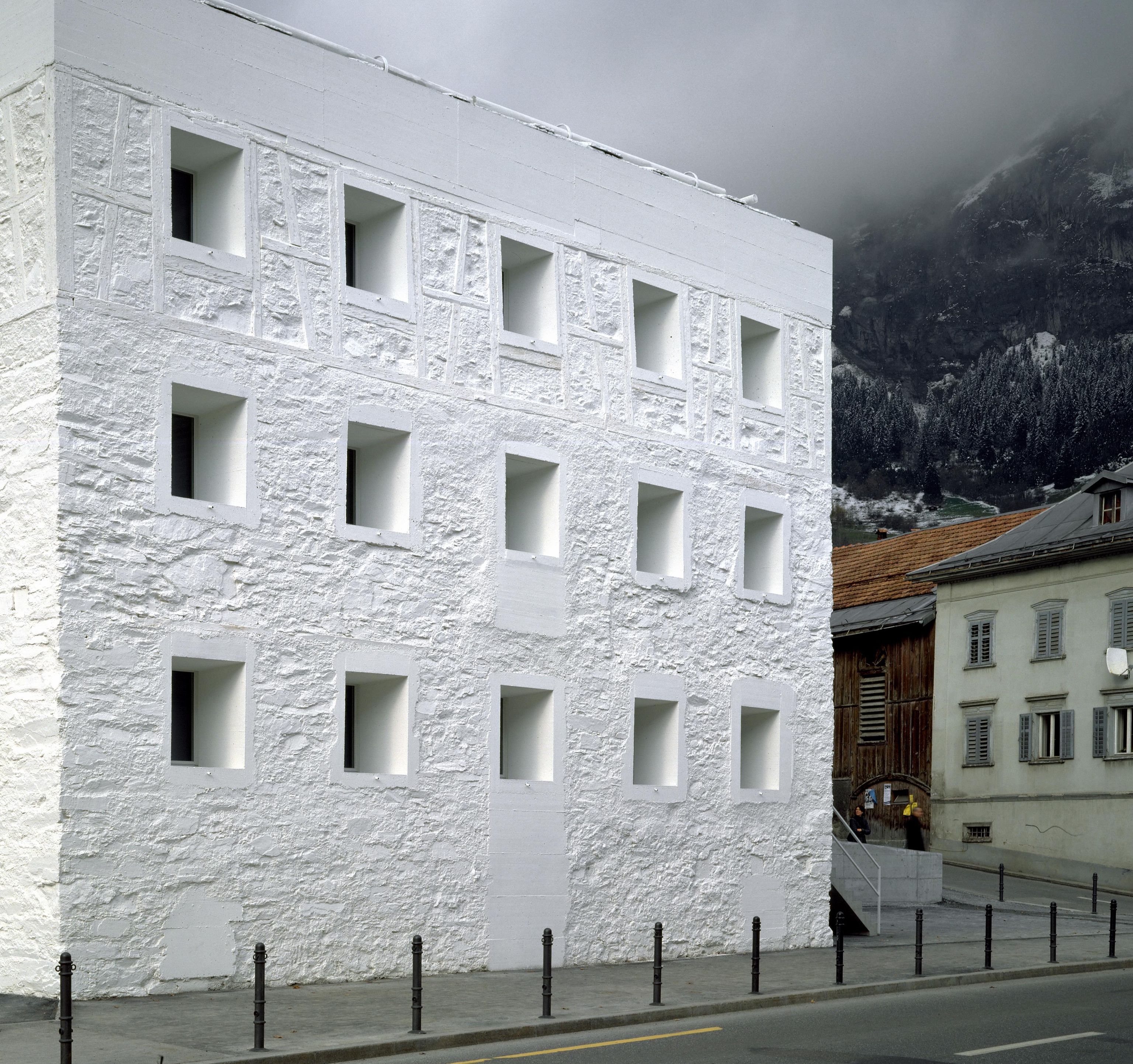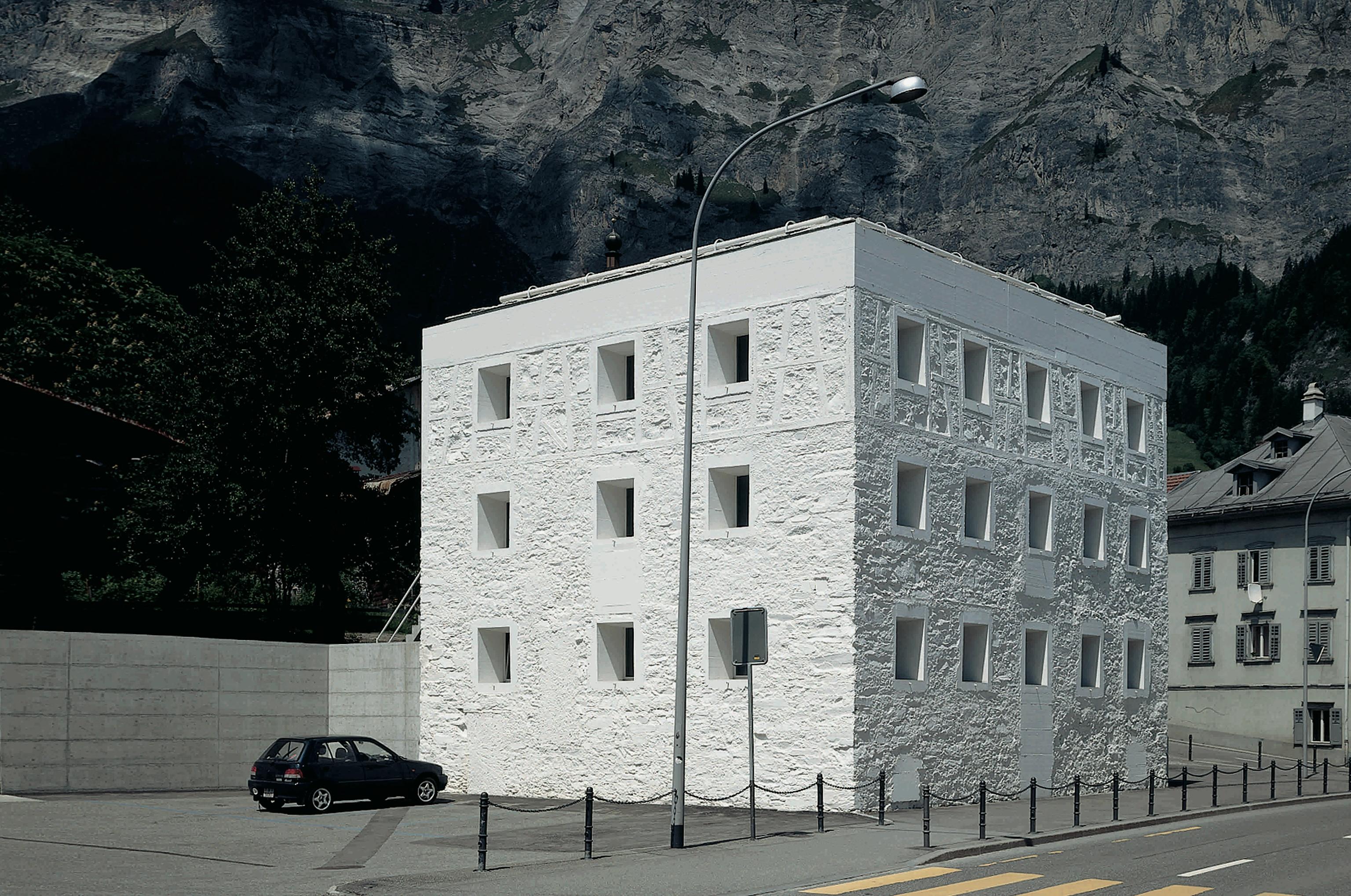
Valerio Olgiati
The Yellow House
- ArchitectValerio Olgiati
- Photographer© Archive Olgiati
Mikkel Schlesinger We are moving towards building less, and transforming and restoring more, to stay within planetary boundaries. The Yellow House is a former mansion that faced demolition but was saved by Valerio Olgiati’s father, who stripped it down to its outer walls and transformed it into an art space.The white paint, raw unfinished walls, and invisible windows make the building strangely abstract, unreal, and poetic. Valerio Olgiati calls it “wonderful realism” - a realism full of wonders, of things that are not real.
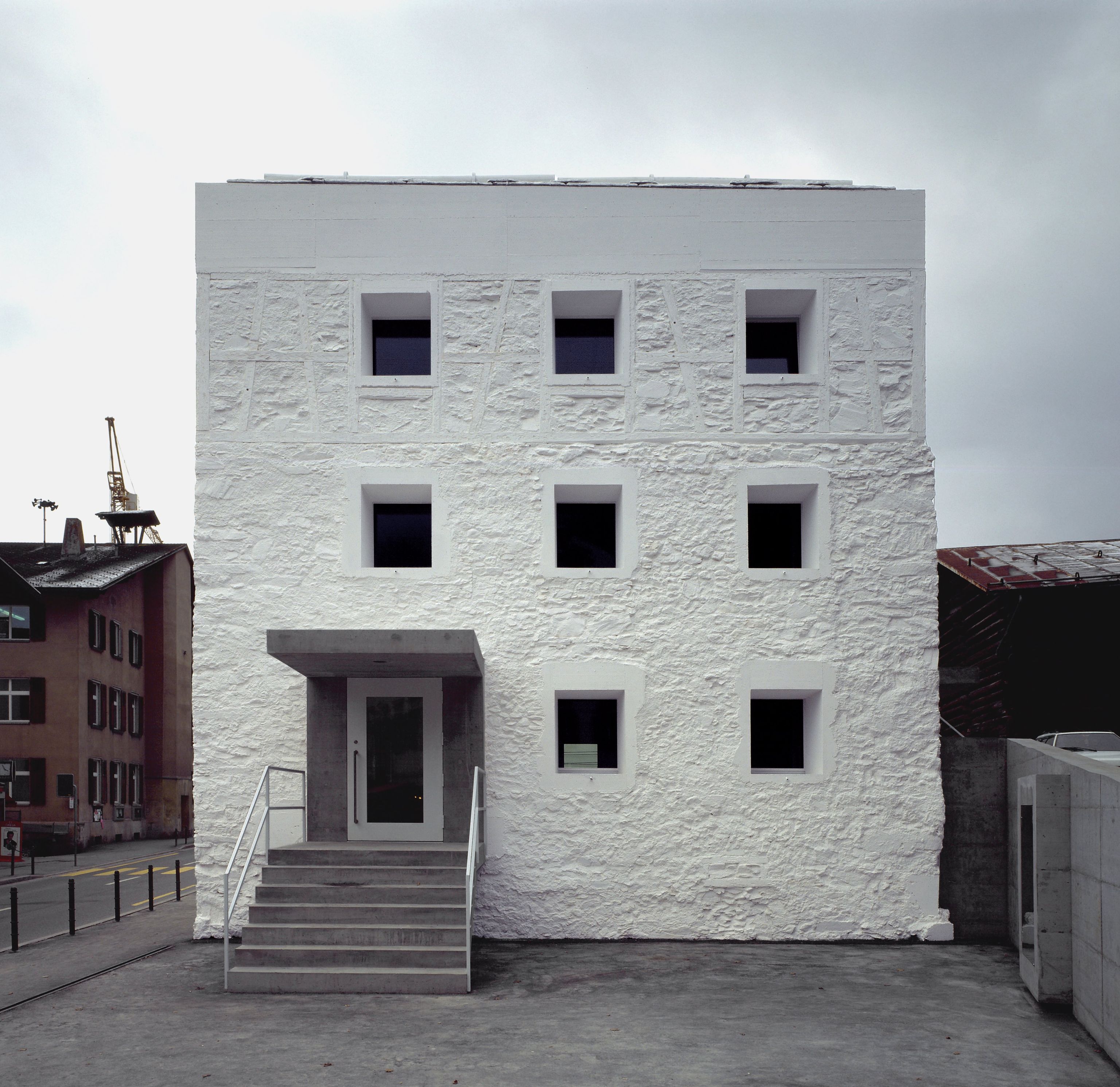
The Yellow House, Flims
The Yellow House - Das Gelbe Haus - in the Alpine village of Flims, Switzerland, is a museum designed by architect Valerio Olgiati in honour of his father, Rudolf Olgiati. Once a modest residence covered in yellow plaster, the building had stood empty for twenty years before its transformation. The original renovation concept was devised by Rudolf Olgiati and agreed upon with the municipality of Flims, stipulating, among other things, that the house should be painted white and the roof finished with stone slabs. After his father’s death, Valerio Olgiati continued the project, transforming the building according to the same vision while adapting it for its new function as an exhibition space.

From Yellow to White
“The building was completely gutted,” Olgiati explains. “The interior was rebuilt in solid wood, the old external plaster-work was removed to reveal the natural stone walls, and the roof was removed and replaced with randomly shaped stone slabs. Windows and openings that were no longer needed were filled in; others were fitted with new concrete reveals cast in situ.” The once residential layout, divided into small sections, was opened up to suit its new function. Finally, “the new interior wood structure, the existing external stone walls and the new slab-stone roof were all painted white.”
The result is a structure defined by restraint and reduction - nothing decorative, nothing superfluous. “The outermost skin of the building is now formed by an extremely fine white coat of lime wash that conceals anything left unfinished,” Olgiati writes. “At the same time, it evokes a kind of contradictoriness: the bright white surface invests the childlike archaism and sensual materiality of the structure with the character of an abstract thought, which in turn lends the building its apparitional appearance.”
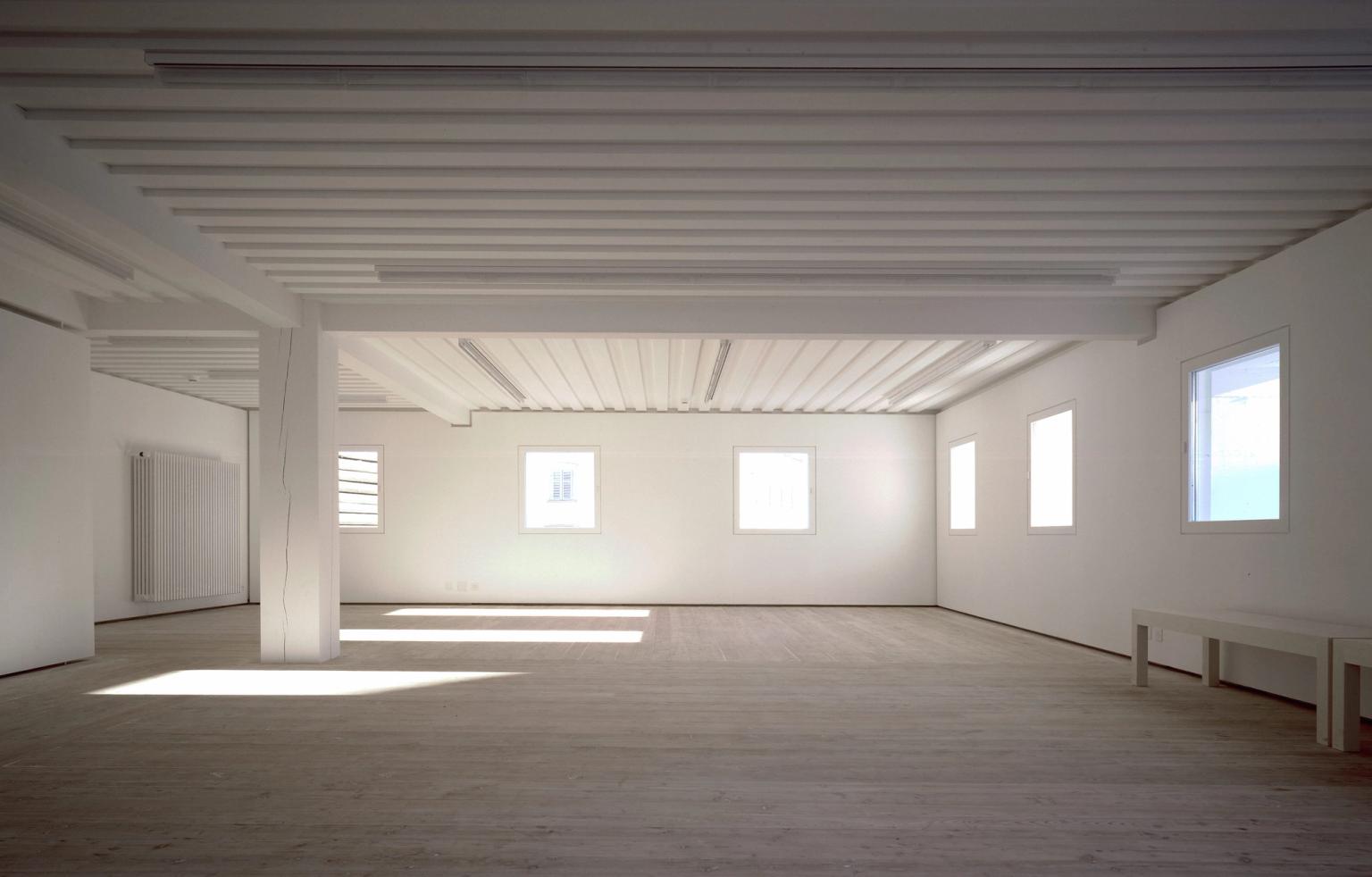

Museum and Legacy
Today, The Yellow House functions as both a museum and an example of contemporary Alpine architecture. Its transformation embodies a continuation of Rudolf Olgiati’s architectural vision while reflecting Valerio Olgiati’s search for clarity and timelessness. Through the interplay of wood, stone, and light, the building balances its historic presence with an almost abstract calm - an “apparitional” quality that allows it to stand both within and beyond its Alpine context.
